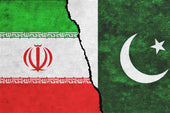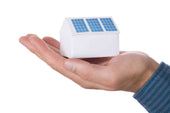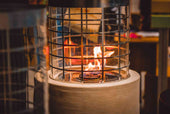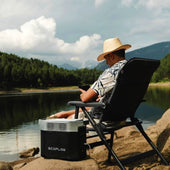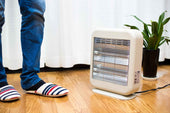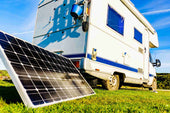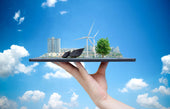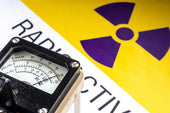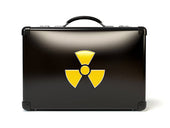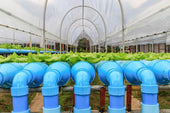The energy crisis is one of the world's most significant issues today. Energy is essential and a critical input to the economy's growth. Without it, we will face a bleak future.
Energy has several benefits. First, it gives us light in the darkness and makes society work. With light, we can do our homework, illuminate the dark streets at night, and interact with people.
Second, it helps industrialize our country. Without electricity, factories won't work, and if they shut down, people would starve. The things we use today require energy.
For example, our clothes require 3 gallons of gasoline to be finished inside the factories. The products these establishments create need to be shipped in trucks, trains, airplanes, or ships, which need fuel to move. Even food production also requires tons of energy.
Everything we do needs energy. Our homes, schools, malls, hospitals, and offices require energy.
One of the most controversial issues today is sustainable energy sources. As our resources deplete, the government is working hard to find possible alternatives for the community.
Energy crisis in the world

We are experiencing an energy crisis due to limited natural resources and rising demand to power our society. While these resources are produced naturally, replenishing them will take thousands of years.
The energy crisis is ongoing, and despite the government's efforts, it is getting worse. Many factors contribute to the crisis.
For one, it is because of overconsumption. People are using and wasting too many resources that they don't need. Indeed, the public needs to be educated about the implications of wasting energy.
It is also linked to the growing population of the world. Hundreds of babies are born every day, and there's a steady increase in energy consumption.
Poor infrastructures that supply energy to communities also contribute to the crisis. Leakages and frequent breakdowns can sometimes result in a poor distribution system.
Lastly, the energy crisis is caused by various factors, such as a military coup, political clashes, strikes, and tax hikes. We need to solve the political issue in our government to find a sustainable solution to this crisis.
The solution to the energy crisis
There are complex and simple solutions to the world's energy crisis problem.
According to experts, the government must explore and invest in renewable energy resources. Today, most of our power comes from non-renewable sources such as coal and fuel.
Our energy problems will only be solved if we give priority to the exploration of renewable energy.
It is also proper to be energy-efficient. We must use energy-saving products. If we travel a short distance, it is best to use bicycles or walk. If we plan to renovate our homes, we must use LED bulbs for our lamps. These products are brighter, safer to use, and economical.
It is also advisable to design homes with proper ventilation so that we do not need to buy expensive appliances to provide fresh air for our families.
Solar panels can also minimize our dependence on big companies to purchase electricity.
Unplugging from the grid is a simple solution to the growing energy crisis. If all homes and offices try to reduce their energy usage, there will be no energy crisis, especially in first-world countries.
Let's find out more below.
How to unplug from the grid
Home Power magazine says that there were around 180,000 homes that supplied their power in 2006.
In addition, 27,000 homes use wind and solar energy to offset their grid connection.
Going off the grid is a good way of being environment-friendly and eliminating the frustrating monthly bills. Here are some tips on how to do it:

Going solar
Solar technology has been used for industrial purposes since the 1950s. In the early 2000s, solar panels were introduced for domestic purposes.
According to the International Energy Agency, solar power could be the largest source of electricity by 2050.
Since 2008, hundreds of families in the United States have switched to using solar energy to power their homes. In addition, the cost of buying and installing solar power systems has dropped to about 50%.
This technology harnesses the sun and turns it into electricity. It requires solar panels, which we sometimes see on fields or rooftops. The panels are connected to inverters, which convert the DC power from the solar panels to AC power for the grid.
When the sun shines on the panels, the cells absorb photons, creating an electric field that allows electricity to flow. Thus, solar panels will work as long as the sun shines.
You can install it on your roof or ask neighbors to share the costs of building solar panels.
The amount of money and energy you can save by going solar depends on your usage and the system that you have installed. Using solar panels also reduces the number of pollutants, such as carbon, emitted to the environment. This will then result from cleaning water and air.
Success Stories: Solar energy
Kathleen Watson of Buckeye, Arizona, switched to solar energy in 2011. She paid for the system with a $10,258 Home equity line of credit.
Watson says she used to pay $75 monthly for her bills, but now she pays only $10 for connection fees. Her solar power system generates 100% of her electricity. She has been saving money and being environmentally friendly for almost six years.
Meanwhile, John and Mami Humann of Mission Viejo, California, paid $17,668 cash to install the solar power system on their home in 2014.
The couple is both financial managers, and they have learned that the benefits of going solar outweigh the disadvantages. They now save about $233 per month for their electric bills.
Apart from successful homeowners, a city in North Adams, Massachusetts, uses solar panels to power its residents. With about 13,000 residents, the city is now 100% solar. Borrego Solar constructed the project, which features a 3.5-megawatt solar array.
Using wind turbines
If you live in a windy area, wind turbines can generate green power for you. Small wind turbines are electric generators that utilize the wind to create clean and free power for homes, offices, farms, and other establishments.
Wind energy has been used since the time of Ancient Chinese. Windmills were created to pump water in China and grind grains in the Middle East. Throughout the 20th century, wind turbines were introduced for domestic purposes.
Professionals at your home can set up this technology. On average, wind turbines measure about 80 feet, generating a 5-kilowatt capacity to support energy requirements at home. It costs around $10,000 to $70,000, depending on the installation expenses.
Wind can turn the blades and spin the shaft, which connects to a generator to store and produce electricity. Wind turbines can have a horizontal and a vertical axis.
Regarding success stories regarding the use of wind energy, the University of Pennsylvania is the leader in revolutionizing energy usage in US universities.
Meanwhile, Rock Port, Missouri, has used wind power to produce 123% of its electricity demand. The neighboring provinces can also benefit from the surplus. Spain and Norway are some of the popular countries addressing their power issues using wind energy.
Off the city water and sewer lines
There are various options when you decide to live off the grid for your water supply. You can dig a well and build a rainwater harvesting system.
Rainwater harvesting is catching the rain and storing it for different domestic purposes. It was started in the 3rd BC in Pakistan to water the farms. The system includes catchments, coarse mesh, gutters, conduits, and filters. The filtered water can be used for drinking, bathing, washing clothes, cleaning the house, and other purposes.
Rainwater is safe, sustainable, and accessible. The system requires minimal energy to operate. In addition, collecting and storing rainwater can reduce the cost of buying expensive water for your family.
Countries such as China, Brazil, Australia, Canada, and some parts of the United States utilize this technology for their communities. India has also started the rainwater harvesting (RWH) scheme to supply water in some parts, such as Chennai.
The second option for your water source is drilling a water well. Groundwater is water soaked in the soil and other openings of rocks and sand. You can harvest it by making holes in the ground and building wells. The wells are lined with PVC pipes and protected by a screen to prevent sand and other particles from entering the pipes.
Pumps or pressure tanks can push water from the well above. Well water is pure, does not deplete quickly, and requires minimal energy. Several countries worldwide have success stories using water wells. This old technique is still applicable today.
Living the 'off the grid' lifestyle

In addition to installing power and water sources, switching to an 'off-the-grid' lifestyle is advisable, which means reducing energy consumption as much as possible.
This will include minimizing online activities on your tablet, smartphone, and laptop.
Please turn off the appliances when they're not in use. Open your home's doors and windows if your room's ventilation is insufficient. Minimize using an air conditioning unit and let fresh air enter your room. When traveling, switch to walking or riding bicycles.
You can also reduce your carbon footprint by using mass transportation, such as buses and trains, rather than bringing your car when traveling. To reduce waste, you can also learn to reuse and recycle the things you use.
You can redesign clothes, bags, shoes, and accessories to make them fashionable rather than throwing them away. You can also turn the biodegradable products in your kitchen into fertilizers for your plants.
When you familiarize yourself with these simple actions, your life will change.
'Off the grid' pros
There are advantages of unplugging from the grid. For one, living an off-the-grid lifestyle will make you independent of state policies. The laws on off-the-grid resources are lax, and you can have the freedom to install one in your home.
Second, installation is affordable, and credit loans are provided for homeowners.
Third, with the grid system, you have the freedom to expand it anytime that you want. You can upgrade it and bring more energy supplies for your home if you have extra savings in your account.
Fourth, living in the off-grid system will teach you to use energy efficiently. This will open your eyes to the wise spending of electricity and water inside your homes.
Lastly, switching to the off-grid system will give you satisfaction and peace of mind. It will provide you with a long-term solution to your expensive monthly bills from big companies.
'Off the grid' cons
Meanwhile, living off the grid requires special maintenance, sometimes requiring spending money.
In addition, you will do all the work in taking care of the system, such as checking the batteries, cleaning up the filters, and ensuring the blades are working. You must ask for professional help to avoid daily equipment checking alone.
Living off-grid can be satisfying, but it's also a big responsibility. You must be willing to adjust your electrical activities to weather changes.
Sometimes, the weather is unpredictable. If you live in the city and are impatient with the traffic, the same is true when you wait for the sun or wind to energize your generator.
Conclusion

Most people nowadays want to unplug from the grid to save money, be environmentally friendly, and provide their families with a sustainable energy source. This trend has been prevalent for many years and will continue to thrive in the years to come.
There are precautions to take when switching to an off-grid lifestyle. Proper research is necessary to make it successful. It combines good education, the right mindset, and advanced technology.










